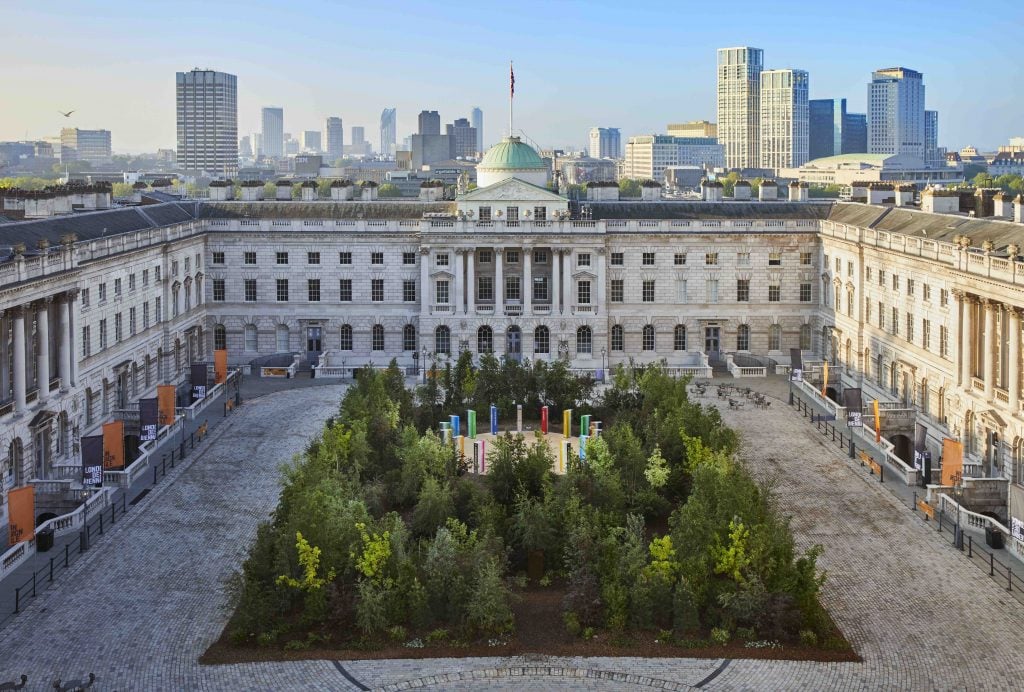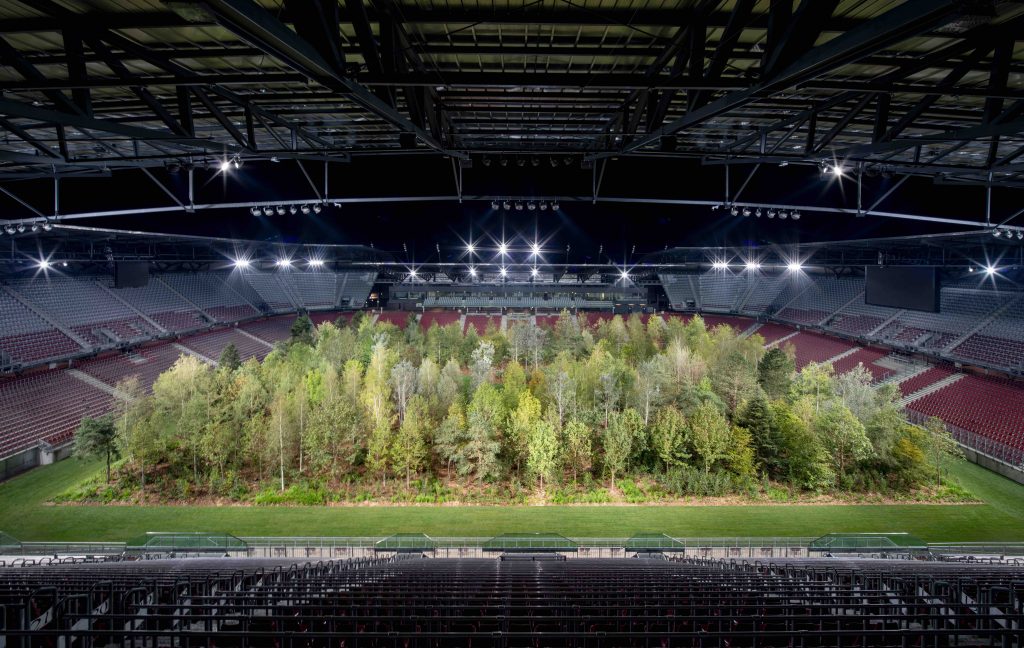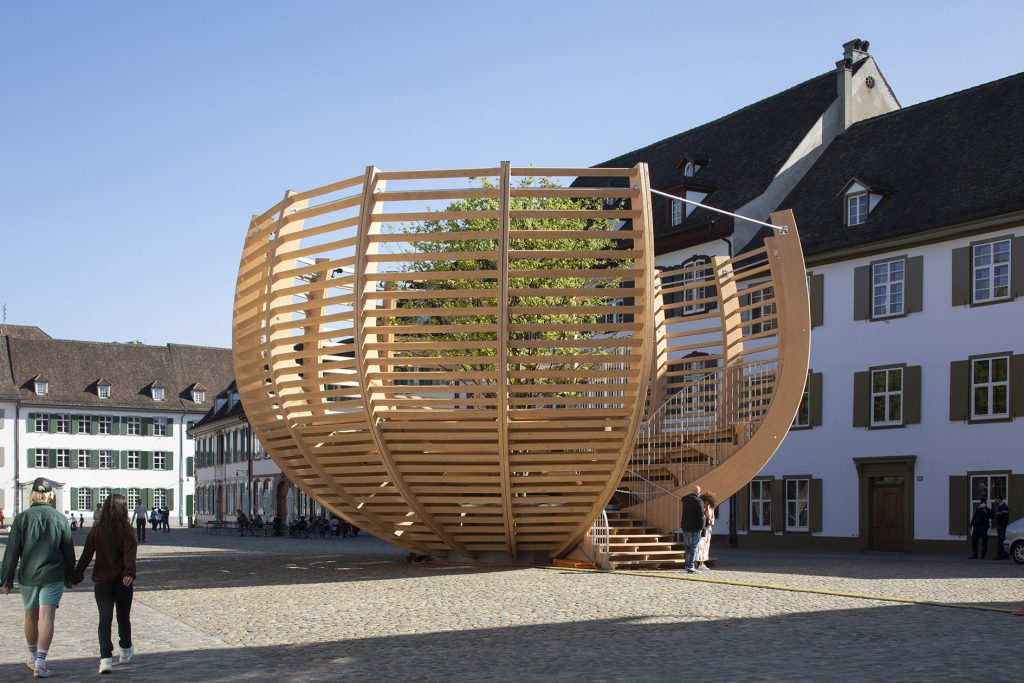Art World
A Swiss Curator Is Calling the Centerpiece Exhibition of London’s Design Biennial an ‘Imitation’ of His Earlier Work
Es Devlin said her project was "completely independent" from a similar work by Klaus Littmann in 2019.

Es Devlin said her project was "completely independent" from a similar work by Klaus Littmann in 2019.

Naomi Rea

London’s Design Biennial opened this week with a central question posed by its artistic director, the award-winning artist and stage designer Es Devlin: How can design provide solutions to the greatest crises facing the world today?
A centerpiece of the exhibition is a spectacular forest of 400 trees planted in the magnificent courtyard of Somerset House. Designed by Devlin for the biennial’s Global Goals pavilion, there’s a clearing at the center of this “Forest for Change,” as it’s called, with an installation driving awareness of the United Nations’ goals for sustainable development.
The exhibition, one of 38 projects from international artists, designers, and curators, has been a talking point of the biennial—but not always in a good way. Swiss curator Klaus Littman has spoken out about the project, accusing Devlin of copying one of his own works without giving him credit.
“When I first saw the news about the project by Es Devlin for the London Design Festival I was both surprised and irritated,” he said, adding that it is “an imitation.”

Klaus Littmann, “FOR FOREST—The Unending Attraction of Nature.” ©Gerhard Maurer.
Littman curated a similar project in 2019 when he planted 299 trees inside the massive Klagenfurt football stadium in Austria. Titled “For Forest—The Unending Attraction of Nature,” the project aimed to evoke a dystopian future in which deforestation and humanity’s increasing detachment from nature would mean the only surviving trees would be marveled at like animals in a zoo.
The curator said that since Devlin’s project was announced in May, the visual similarity to his has led many to believe he was repeating the Klagenfurt project in collaboration with Devlin for the biennial. “I simply cannot leave this misinterpretation to be unchallenged,” he said.
Littmann said he wanted to speak out about Devlin’s project to avoid confusion, particularly as he is currently showing a follow-up to his 2019 project in Basel, this time highlighting a single tree inside a wooden structure in the city’s Münsterplatz, in conjunction with an exhibition, “Tree Connections,” at the Kultursiftung Basel H. Geiger.

Klaus Littman, Arena for a Tree (2021) at Münsterplatz Basel, presented with KBH.G. Photo by Gerhard Maurer.
The similarities between the two projects are not only visual, Littman added. The selection processes for the trees were similar, and all of them will be reintegrated into suitable tree populations following the close of the exhibitions. They both also share a common aim to raise awareness of pressing issues of climate change and deforestation, and recenter our relationship with nature.
When asked for for a response to Littmann’s allegations, a representative from Devlin’s studio said that the projects were “completely independent.”
“Both in concept and in execution, Es Devlin’s ‘Forest for Change’ at Somerset House functions and looks very different to Klaus Littmann’s work,” the representative said.
In a press statement, Devlin said that the idea for her project emerged after she learned that the Enlightenment principles on which Somerset House was conceived forbade the introduction of trees into the courtyard. “Of course, the first thing we wanted to do when considering this year’s biennale was to counter this attitude of human dominance over nature, by allowing a forest to overtake the entire courtyard,” she said.
The London Design Biennale is on view through June 27 at Somerset House.
“Tree Connections” is on view through July 11 at the Kultursiftung Basel H. Geiger.